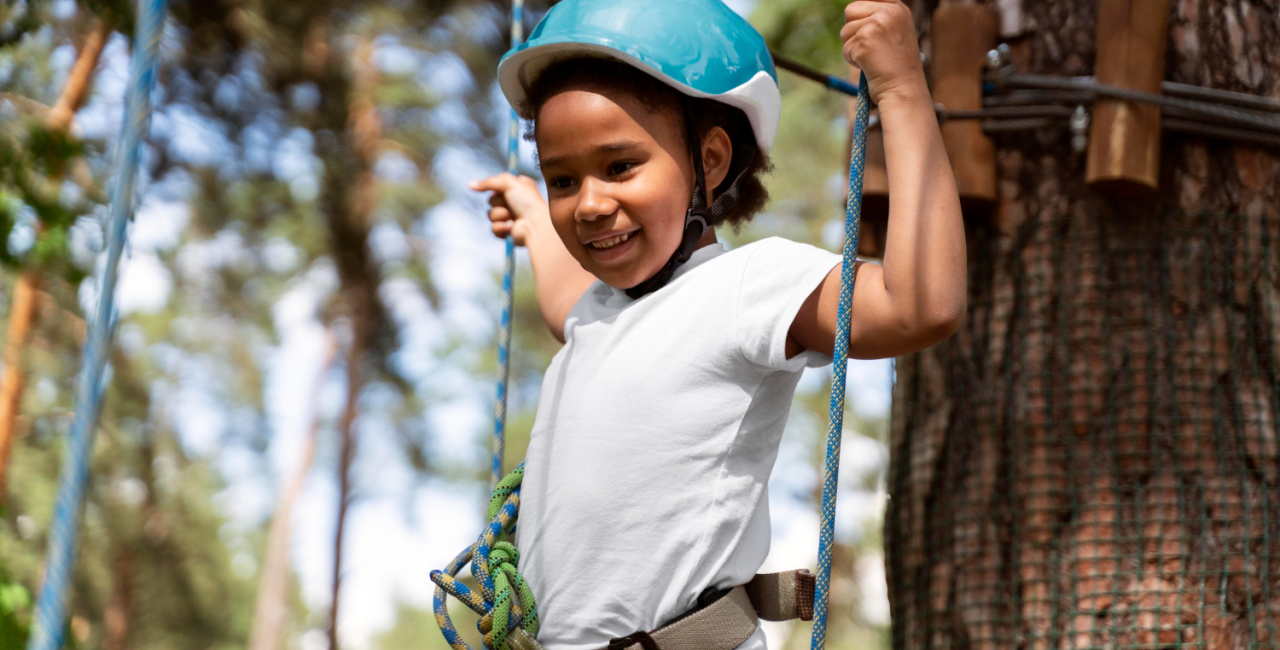As parents, our natural instinct is to protect our children from harm. We hover on the playground, shout “be careful!” when they climb the couch, and sometimes stop them from doing something that looks even a little risky. After all, we don’t want bruises, broken bones, or tears. But sometimes in our zeal to remove every ounce of risk from our child’s life, we also unintentionally remove opportunities for growth too.
For instance, riding a bike down the street or even helping out in the kitchen. These activities carry some risk, yes, but they also teach responsibility, awareness, and independence, skills your child will need throughout life. If we shelter children too much, we unintentionally send the message that the world is too dangerous for them to handle, which can make them fearful and hesitant instead of brave and resourceful.
In this post, we will explore four “dangerous” things you should actually let your child do. Each of these might make you nervous at first, but when done safely, they open the door to growth, confidence, and real-life skills your child won’t learn anywhere else.
1. Climbing Trees and Exploring Heights
If you think back to your own childhood, there is a good chance you can remember climbing something: a tree, a wall, maybe even the ceiling of your house when nobody was watching. It was scary, thrilling, and freeing all at once. For children today, that same sense of adventure is just as important.
Climbing trees or exploring heights (like a climbing frame at the playground) isn’t just fun, but it builds balance, coordination, and strength. Your child learns to judge distances, grip tightly, and figure out how to get down safely, all skills they can’t develop sitting indoors.
Of course, as a parent, your first thought might be, “What if they fall?” And yes, falls do happen. But here is the truth: most of the time, children are more careful than we give them credit for. They naturally test their limits step by step; they don’t usually go from the ground to the tallest branch in one leap. By letting them climb while you supervise from a safe distance, you are teaching them how to assess risk, listen to their own instincts, and problem-solve in real time.
If you allow your child to climb and explore, you are not being careless. You are giving them the gift of confidence. They learn that it is okay to take small risks, that they can rely on their bodies, and that falling down and trying again is part of growing up.
Pro tip: It is important to know that some children are more into physical activities, while others prefer brain activities. So don’t try to force your child if they’re not into it.
2. Exploring the Outdoors Without Constant Supervision
Many of us grew up riding bikes in the neighborhood, walking to a friend’s house, or wandering through fields and bushes near home. Today, children have far fewer opportunities to explore outdoors without constant adult eyes on them. While the world has changed and safety concerns are real, giving children age-appropriate independence is still important.
Exploring outdoors on their own, whether it is biking around the block, walking to school with a sibling, or playing in a nearby park, teaches children responsibility and decision-making. They learn to watch out for traffic, to manage time (“I need to be home by 6”), and to solve small problems that arise when you are not there to step in.
This doesn’t mean throwing them into the deep end. Independence should grow step by step. Start small:
- Let a younger child play in the yard or compound while you keep an ear out.
- Allow older children to ride their bike around the block and check back in after 10 minutes.
- Gradually extend trust, like letting them walk to a neighbor’s house or the corner store, depending on your comfort level and community safety.
Children feel proud when they are trusted to be on their own. It makes them more careful, not less, because they know the responsibility rests with them. They begin to see themselves as capable, and that confidence carries over into other parts of life.
3. Cooking with Fire and Heat (with Guidance)
Many parents shy away from letting their children near the gas cooker, oven, or even hot water, for fear of burns. But learning how to cook with real heat, boiling pasta, frying plantain, or baking bread, is a skill every child eventually needs. Shielding them too long only delays the learning curve.
When children are taught how to handle fire and heat safely, they become more cautious, not careless. Mistakes will happen, but those experiences build awareness and respect for danger.
Start with small, safe steps, stirring a pot under your watchful eye, handling a kettle, or lighting the cooker with supervision. As their confidence grows, so does their sense of responsibility.
4. Handling Real Money in Real Situations
It may not sound dangerous at first, but money is one of the most “risky” tools a child can learn to manage. Many parents avoid letting children handle cash or pay for things at the store because they are worried about mistakes, being short-changed, or losing it. But these are exactly the lessons children need to experience early.
Allowing a child to buy bread at the shop, handle change, or even budget their own small allowance teaches risk-taking in a safe way. They may miscalculate or drop a note, but that discomfort is part of learning. Money mistakes are much cheaper at 10 years old than at 25.
It might feel easier to do it yourself, but giving them this responsibility strengthens not just their financial sense but also their independence.
Learning Experiences
Sometimes, in our attempt to keep them safe, we end up shielding them from the very experiences that build resilience, confidence, and independence.
You see, children learn best when they are allowed to test their limits in safe but challenging ways. A scraped knee, a small burn, or a few lost bills are not failures; they are stepping stones toward becoming capable adults.
So instead of asking, “What if something goes wrong?” Try asking, “What could my child learn if I step back a little?” The risks may feel uncomfortable at first, but the rewards are worth it. After all, our goal isn’t just to keep our children safe in the moment; it is to prepare them for a world where they will need to stand tall, think smart, and handle life with courage.


